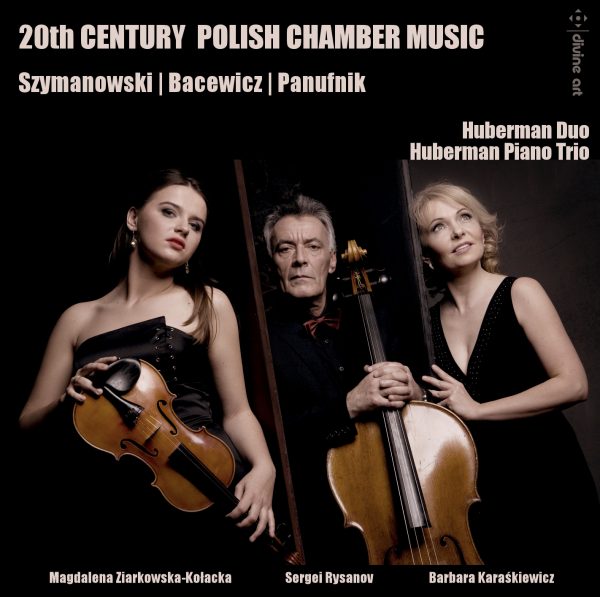Musical Opinion
This collection of chamber music provides snapshots of Polish music at thirty-year intervals from the turn of the last century to after World War II. Szymanowski (1882-1937) was Poland’s first major composer since Chopin. In his maturity he won many international awards and in recent years has been rightly recognised by prominent conductors as a major figure in twentieth century music. In 2007 the Polish government proclaimed ‘The Year of Karol Szymanowski’ to mark his anniversaries. But this Violin and Piano Sonata is an early work from 1904 with little suggestion of the gorgeous extravagance of the later symphonies and concertos. All the same, it is a substantial three-movement piece with a Brahmsian continuity and it was popular in its day. Unfortunately the recorded balance favours the piano.
Andrzej Panufnik regarded his Piano Trio (1934) as his first serious composition. It came from his years at the Warsaw Conservatoire, a happy time of his life so different from the wartime and post-war horrors to come. The Trio, along with other manuscripts, was destroyed during the war and had to be recomposed later. The fascinating story of Panufnik’s background is in his book Composing Myself (1987), with an enlarged edition forthcoming. The Trio’s opening poco adagio has a great variety of texture with the instruments pairing up in unexpected ways. There are dissonant piano chords in a modernist atmosphere that avoids being derivative, and the second movement is a lyrical continuity followed by a light-hearted Presto that feels like a scherzo. Grazyna Bacewicz (1909-’69) was a professional violinist, also a pianist, and she wrote short stories and novels. As a composer she studied in Paris with Boulanger, the violin with Flesch, and achieved international composition awards in the 1950s and 60s. her large output includes seven violin concertos, seven string quartets and this is her fourth violin and piano sonata (1949). Unlike Panufnik, she stayed in Poland and her style is not too far out for the Stalinist regime, although she branched out in the 1960s along with many younger composers. Her violin and piano sonata is in four balanced movements. The andante has moments of intensity and the finale draws on folk influences. These are convincing performances mostly well recorded. [four and half stars]
@divineartrecordingsgroup
A First Inversion Company
Registered Office:
176-178 Pontefract Road, Cudworth, Barnsley S72 8BE
+44 1226 596703
Fort Worth, TX 76110
+1.682.233.4978











![Listen to the full suite of Marcel Dupré’s Variations Sur un Noël, Op. 20 from Alexander Ffinch’s #Expectations release today! listn.fm/expectations [in bio]](https://scontent-dfw5-1.cdninstagram.com/v/t51.71878-15/588904367_2327488161082898_8709236950834211856_n.jpg?stp=dst-jpg_e35_tt6&_nc_cat=105&ccb=7-5&_nc_sid=18de74&efg=eyJlZmdfdGFnIjoiQ0xJUFMuYmVzdF9pbWFnZV91cmxnZW4uQzMifQ%3D%3D&_nc_ohc=H3rHeRayPTgQ7kNvwFEpzSS&_nc_oc=AdmCuQLGzs-byjOnbnXM7FGZaSfsAwouNLB045HgWXb_VQvA75DMDU5es6tJISUsEgwi5B7o5TC8XXsm9JuD_-Eq&_nc_zt=23&_nc_ht=scontent-dfw5-1.cdninstagram.com&edm=ANo9K5cEAAAA&_nc_gid=KNOET7VC3dOIsjLjluValA&oh=00_AfmSHyMnb65WDdJVfguITUJUYojdS0bt0NYEJ8QR7_OwCw&oe=6958ED2A)
